In (In)Sanity and in Sedition
‘Enter at Your Own Risk’ was described as ‘a ‘seditious’ play in a few scenes showing sanity and insanity performed by actors as inmates of National Paagalkhaana – By Order of Toba Tek Singh’. It was based on Sa’adat Hasan Manto’s four stories on the Partition, but in its theatrical rendering it displayed ominous similarities to contemporary times
Rashi Mishra and Sukriti Khurana
At the time of the Partition, when India was being divided into two new nations based on religious identities of the people, a mass hysteria and an unimaginable violence trapped this piece of land where millions of people lost their lives, homes and existence. Sa’adat Hasan Manto’s partition stories brazenly brought out this madness, which was fuelled by communal hatred.
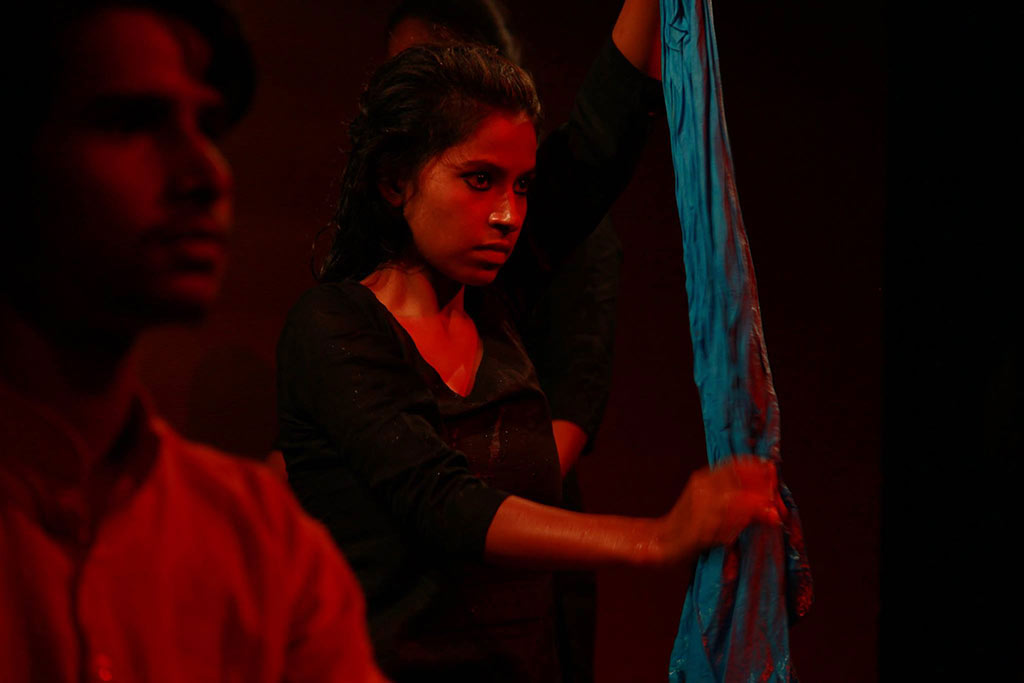
Reading Manto, especially through the four stories that we chose for Enter at Your Own Risk – Toba Tek Singh, Shareefan, Thanda Gosht and Khol do – we felt that his ideas created a resonance; the sharpness of his words, written at the time of the Partition, continue to evoke disturbance in our minds. His stories gave us a new lens to look at and examine the madness that persists in the ordinary and everyday around us, to which we have become so normalised, that it renders us to question our own notions of ‘normal’ and ‘sane’.
And, therefore, Enter at Your Own Risk is set in a mental asylum, where Bashir, Manto and the other characters from these four stories are all inmates; their back stories and interconnections were purposefully weaved together in the fabric of the play, to make visible the dark realities of ongoing violence committed in the name of nationalism.
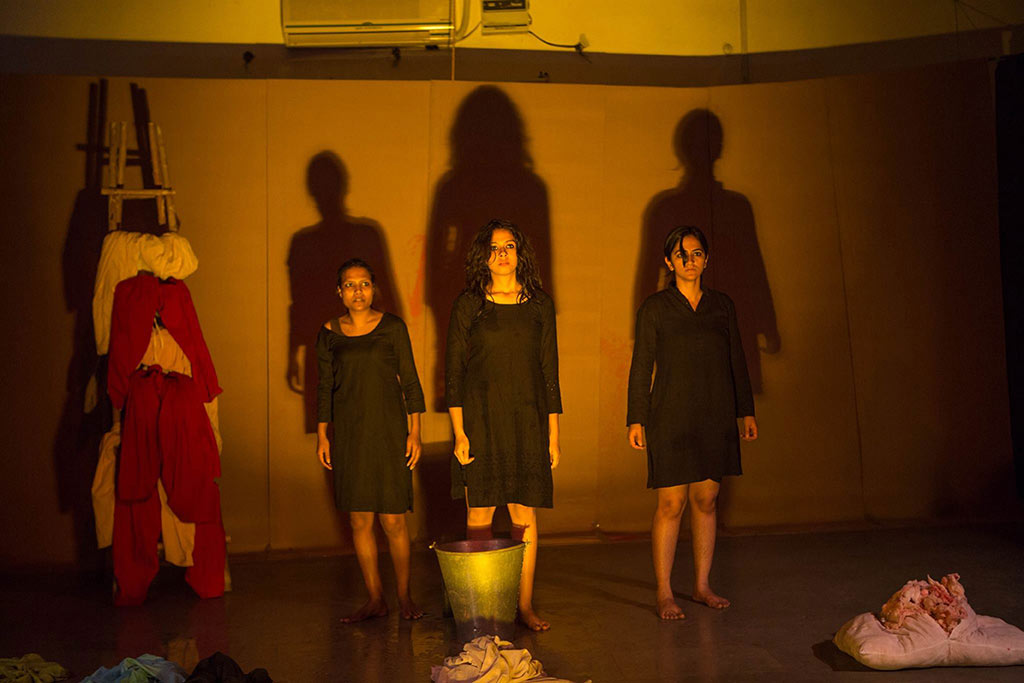
In Toba Tek Singh, Manto portrays the absurdity of Partition, national boundaries and the sacrosanct status given to them, by locating the story in a mental asylum where the inmates are being sent to India or Pakistan according to their religious identity. Through the climax sequence of the death of Bishan Singh, the central character, in no man’s land, he chillingly deconstructs the notions of sanity and insanity.
We found striking thematic similarities in Bashir’s story. Bashir is a real-life person from Kashmir who lost his mental stability after being brutally tortured by a Major from the Indian Army. His mental instability, because of which he starts to identify himself as his oppressor, his identity crisis and the question of Kashmir (still a disputed (no-man’s?) land between India and Pakistan) were used as metaphors for Toba Tek Singh in the play.
Like Bishan Singh, Bashir speaks gibberish representing the collapse of the structure of language in situations like his; he does absurd things like washing his hands again and again, and is always irritated and angry.
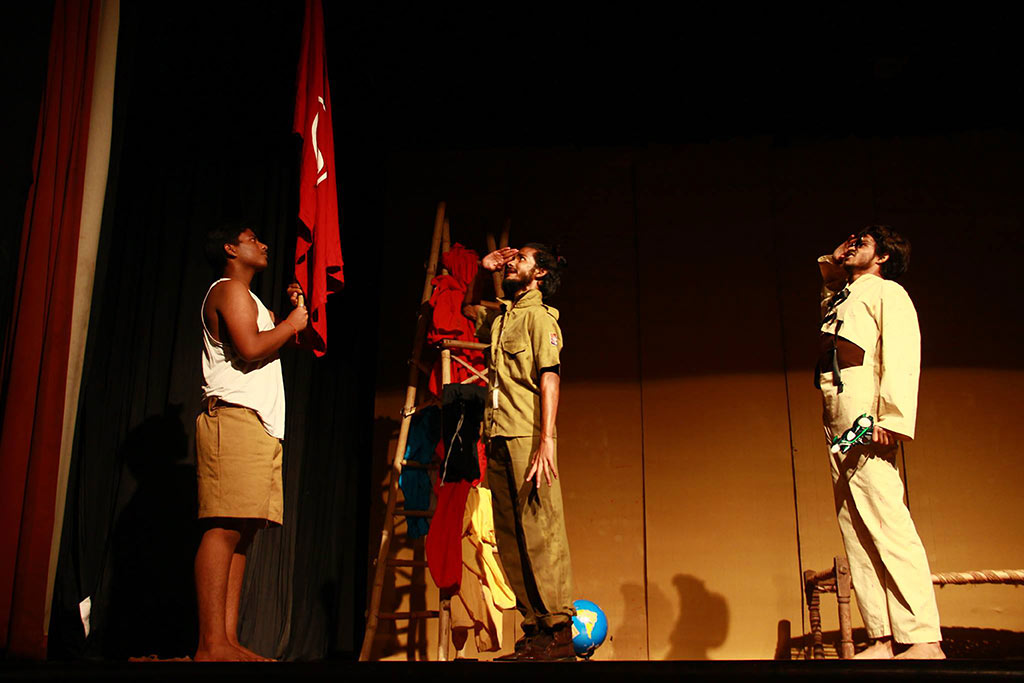
We chose dark humour to gradually unfold the story of Bashir’s torture. In certain comic-mime sequences, Bashir, who thinks he is a tailor who stitches national flags and is very possessive and reverential towards the flag, fights with another character Khuda for the protection of the flag. He even does a few stunts of yoga while paying his respects to the flag. The purpose of the flag was to comment on the current sociopolitical paranoia that surrounds us, as it has a symbolic image of the ‘holy’ cow on one side and a surveillance camera on the other.
During the process of working on this play, we were able to reflect on the various meanings of the terms ‘sanity and insanity’, especially in our contemporary times. These terms seemed convoluted when looked at from an upside down perspective, that is from the humanistic perspective instead of the popular ‘nationalist’ perspective.
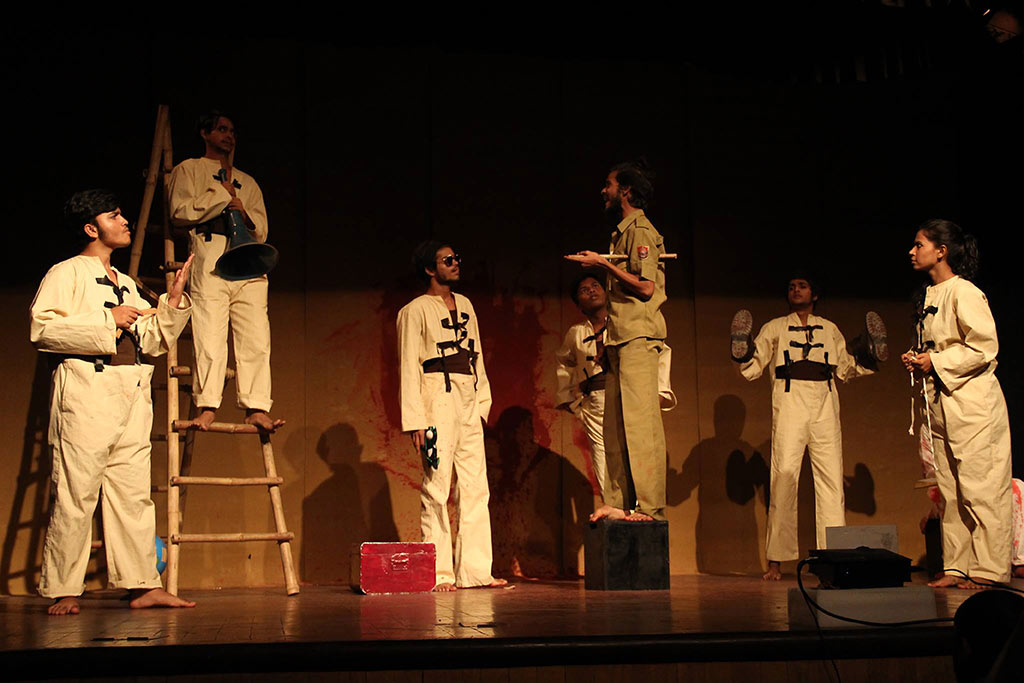
Another narrative in this collage piece had the women characters from Manto’s stories depicting the vulgarity of gendered violence that took place during the Partition, and that continues to take place in various state-led communal violence and riots, and those perpetrated by persons belonging to state led machineries (i.e. the rapes committed by security forces in Kashmir and Manipur).
We remember spending a lot of time debating and trying out ways to represent the gendered violence, as we wanted to avoid clichés. We tried to explore the complexity and vulnerability of the situation. Shubha’s poem Aadamkhor and Amrita Pritam’s Ajjakhan Waris Shah nu helped us expose the politics of patriarchy. We chose to dramatise Shubha’s poem by evolving movements and using objects from the actors’ and (what could have been Manto’s characters’) everyday lives, for example, dipping hair in water, drying up the wet dupatta, and so on. The hair and the dupatta (which are considered to be associated with femininity) became a symbol of protest when used in a specific manner.
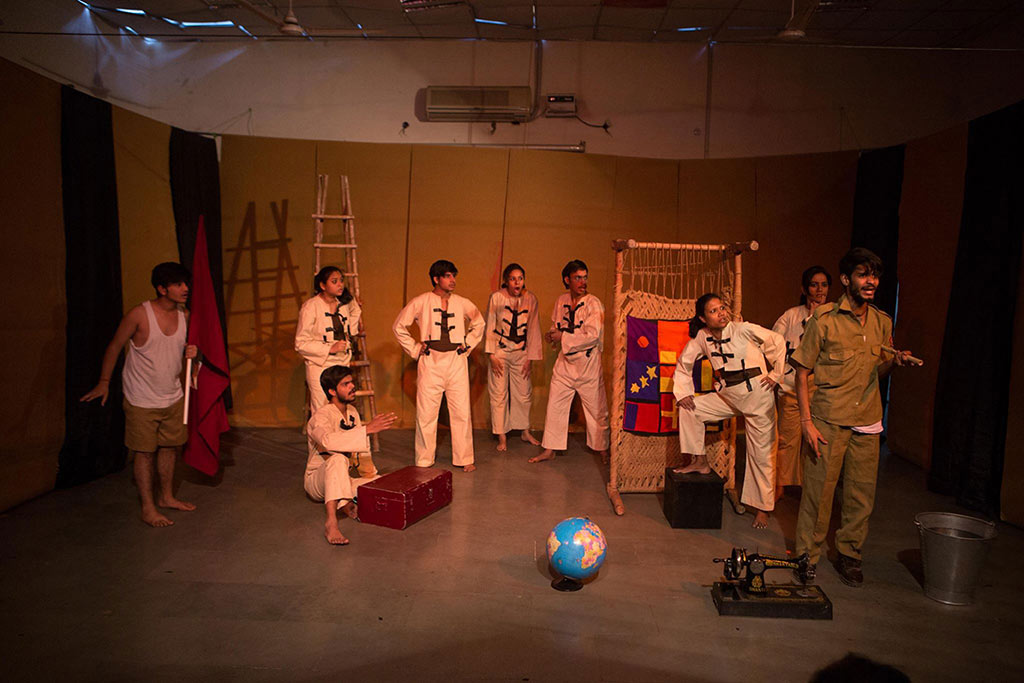
For Pritam’s poem, we found a dramatic recital of the same in her own voice. After discussing the poem and coming to a common understanding during rehearsals, we tried out an exercise where the actors videographed metaphorical visual responses to the poem. Taking that exercise further we made a short film, which had abstract visual images representing violence inflicted on women during riots.
In another devised scene (which was equally difficult and intimidating for both the performers as well as the spectators), the female actors had to remove their salwars while walking in a choreographed sequence. In the scene, the female actors (like the Manipuri women who protested with their naked bodies in front of the army headquarters) not only unclothed themselves but also the vulgarities protected by patriarchal notions of nationalism, brazenly challenging the systems of violence.
We tried to break the conventional mode of dialogue by experimenting with ‘repetition’ (of movement and gestures) and ‘silence’, and create a vocabulary of protest that came from the actors’ own impulses and experiences. We used Brechtian ‘alienation’ in a few scenes so as to remind the audience of their implicit contribution towards these oppressive systems and their existence in these times. For instance, in one of the scenes where Manto’s characters Shareefan and her mother leave a marketplace where the dangers of communal riots lurk, the shopkeepers pick up salwars soiled with blood stains (depicting rapes), hold them out to the audience and start selling it to them saying ‘le lijiyena, bohot sasti hai’ (please buy these salwars, they are very cheap).
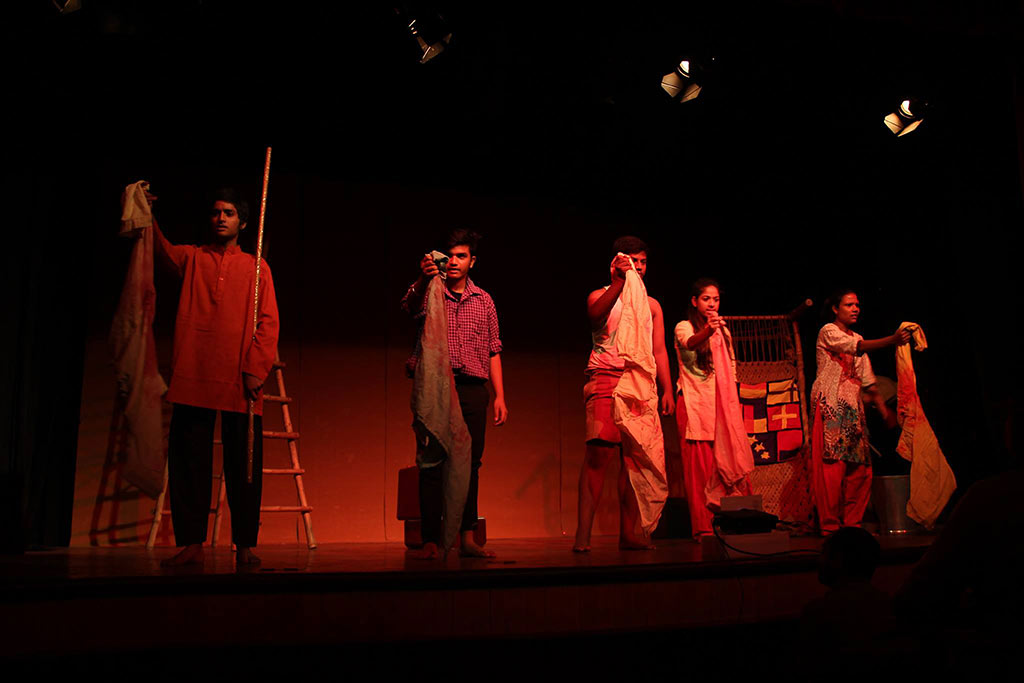
In another scene, Sirajuddin, a character from the story Khol Do, like an indifferent news reader, reports about his daughter’s abduction and his wife’s murder during a communal riot, while the whistle of the train playing in the background heightens the fear that his commentary is generating. His speech representing the excruciating pain of a father and the abject cruelty of the violence pierces through the audience.
Through the play we tried to bring forth the danger that is lurking around us in the form of an upsurge of blind patriotism and nationalistic fervour; and the urgency with which we need to resist it.
___________________________________________________________________________
All Images courtesy of Nirmal Giri A.
Share